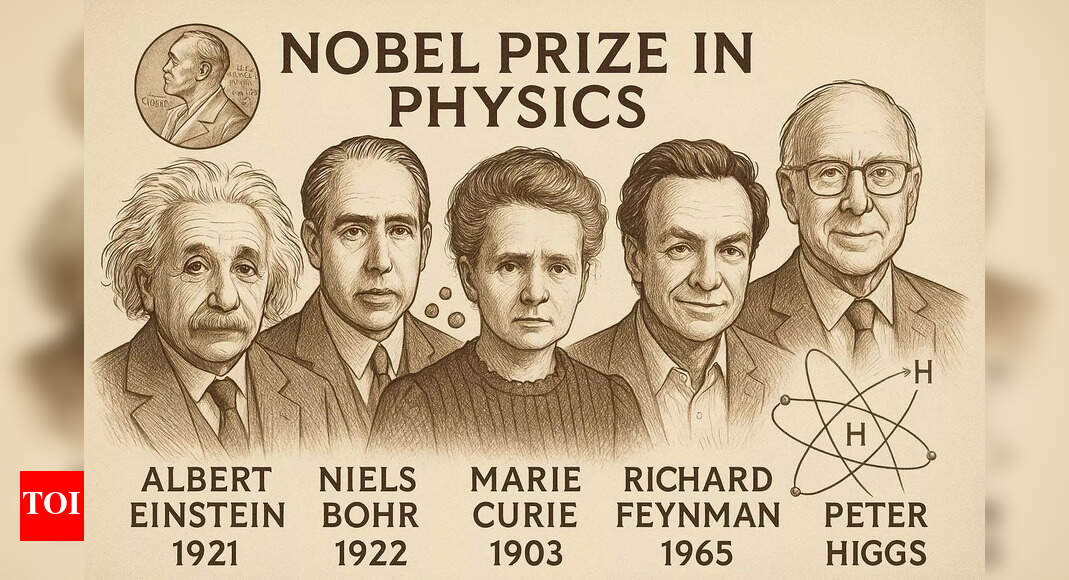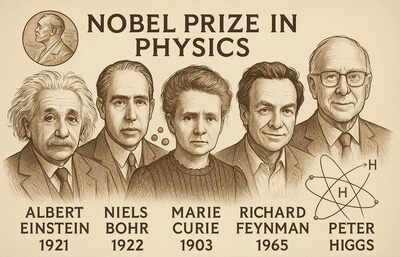
From theories that made video compression possible to the tantalising dream of an invisibility cloak, the 2025 Nobel Prize in Physics could go in several directions when it’s announced at 3PM IST today. After Monday’s Medicine Nobel — which honoured US and Japanese scientists Mary Brunkow, Fred Ramsdell and Shimon Sakaguchi for discovering the body’s immune “peacekeepers” — attention now turns to physics, with predictions ranging from mathematics to space science.
Wavelets: The Maths Behind the Modern World
A strong contender is wavelet theory, a mathematical framework that powers image and video compression across the digital universe.Belgian physicist Ingrid Daubechies and French mathematicians Stéphane Mallat and Yves Meyer are seen as favourites.“It may sound abstract,” said David Pendlebury of Clarivate, “but its impact on how computers process visuals has been dramatic.”Without wavelets, high-definition streaming, JPEGs, and much of modern digital imaging wouldn’t exist.
Metamaterials and the “Invisibility Cloak”
Another buzzed-about area: metamaterials — engineered structures that manipulate electromagnetic waves in ways nature never could. British physicist Sir John Pendry’s groundbreaking work even led to the so-called “invisibility cloak,” long a favourite of Nobel speculation. As Lars Broström of Sveriges Radio put it, “They’ve been discussed for years — maybe it’s finally their time.”
Quantum Information and Computing
Quantum information science could also take the spotlight.Names doing the rounds include Peter Shor, Gilles Brassard, Charles Bennett, and David Deutsch — pioneers whose work laid the groundwork for quantum cryptography and computing.Their algorithms underpin the new generation of quantum processors and secure communications systems now leaving the lab and entering real-world use.From the Cosmos to the Atomic ScaleIf the committee looks to the stars, expect recognition for the James Webb Space Telescope team — a project decades in the making that redefined our view of the early universe.Other astrophysics favourites include Carlos Frenk, Julio Navarro, and Simon White for mapping galaxy formation; or theorists Alan Guth and Andrei Linde for cosmic inflation, explaining how the universe expanded exponentially after the Big Bang.Alternatively, the committee could go microscopic — honouring work on the atomic force microscope, which captures 3D images at the atomic scale.Swiss physicist Christoph Gerber is seen as a major figure behind this breakthrough.
Last Year’s Prize and What’s Next
In 2024, the Nobel went to Geoffrey Hinton and John Hopfield for laying the foundations of artificial intelligence — both of whom warned that their creations could outgrow human control.This year’s winner or winners will receive a diploma, gold medal, and $1 million from Sweden’s King Carl XVI Gustaf on December 10, the anniversary of Alfred Nobel’s death.The Chemistry Nobel follows on Wednesday, Literature on Thursday, and the Peace Prize — always the most closely watched — on Friday.The Economics Prize will conclude the 2025 Nobel season next week.
The Most Iconic Physics Nobel Laureates
Over more than a century, the Physics Nobel has celebrated some of humanity’s greatest scientific leaps. Among its most legendary winners are Albert Einstein (1921) for discovering the photoelectric effect, Niels Bohr (1922) for his model of the atom, and Marie Curie (1903) for her pioneering research on radioactivity — making her the first woman ever to win a Nobel. Later came Richard Feynman (1965), who reshaped quantum electrodynamics, and Peter Higgs (2013), who predicted the Higgs boson — the so-called “God particle.” Each of them not only changed physics but altered how humanity understands the universe itself.With inputs from agencies








